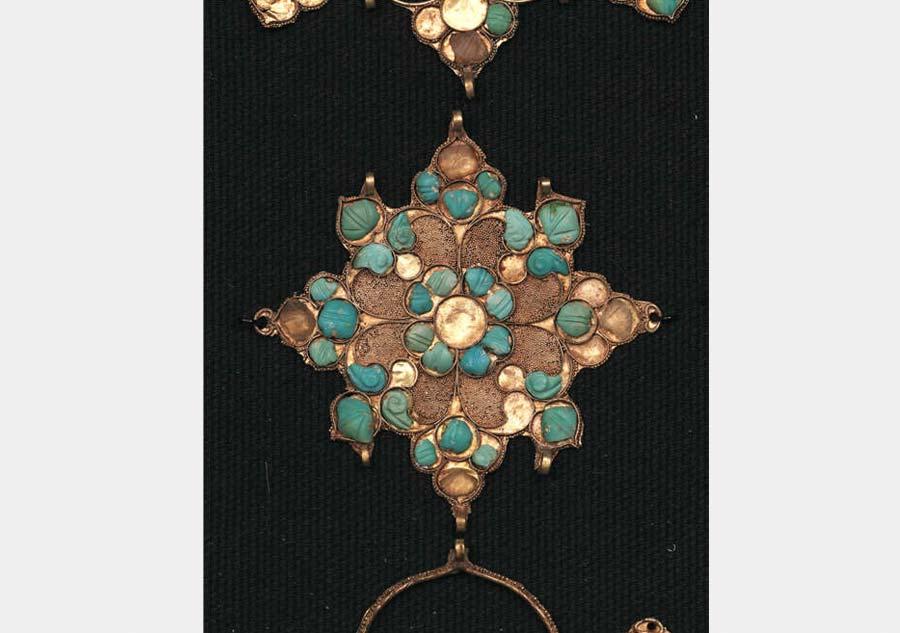
Guilt silver sachet with flower and bird patterns, Tang Dynasty (618-907). (Photo provided to China Daily)
"Most rulers of the Tang Dynasty were devout Buddhists. And Famen Temple, housing what was believed to be the tiny bone pieces belonging to Sakyamuni, the founder of Buddhism, was in effect the royal temple of worship. What was discovered in its storage-many were items of gold and silver-offers a tantalizing glimpse of a time when imagination was celebrated by a liberal society."
Bai says that the exhibits, as minute as some are, hold up a mirror to what was happening in society at large as well as in the minds of those who crafted the pieces.
"If you look at how metal art developed in China down the centuries there is a clear trajectory of change: personal whimsy gradually being replaced by well-guided endeavor, uncorseted imagination by auspicious images, and untamed beauty by a more stunning-or stupendous, depending on how it affects you-aesthetic."
During the Qing Dynasty (1644-1911), China's last feudal dynasty, a technique named dian cui, or dipping of blue, became popular whereby the surface of gilt silver-mostly hair accessories-were covered with blue kingfisher feathers. The technique is extremely time-consuming, and the result is often a riot of colors as the resplendent blue clashes with gems of different hues.
"It is a visual feast, and one is constantly being reminded of the amount of time put into its making," Bai says.
"But something is lacking, and that, I believe, is the free spirit. Tang is not unique in its prosperity-the period starting with the Qing emperor Kangxi (1654-1722) and ending with his grandson Emperor Qianlong (1711-1799) was also marked by social stability and national power. However, the difference is that in the latter period China's door was closed. It is only with cross-pollination that the flower of art can bloom in true splendor."













































